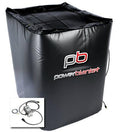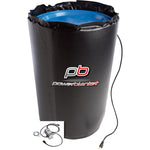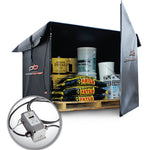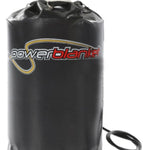You have no items in your shopping cart.
Maintaining DEF Quality: Temperature-Resistant Storage Solutions
Knowing how to store DEF properly can ensure you have several months’ worth of supply on hand. This blog post can help you understand the right way to keep your DEF useable any time you need it.
Article At-a-Glance
What is the Shelf Life of Diesel Exhaust Fluid (DEF)?
Diesel Exhaust Fluid (DEF) typically has a shelf life of about 12 months under ideal storage conditions, but factors like temperature fluctuations, exposure to sunlight, and freezing can significantly reduce its effectiveness, making proper storage essential to maintain its quality and performance.
Key Takeaways
- Understand DEF's Shelf Life: Diesel Exhaust Fluid (DEF) typically remains effective for about 12 months when stored under optimal conditions, such as stable temperatures and minimal exposure to sunlight.
- Impact of Storage Conditions: Temperature fluctuations, direct sunlight, and freezing can significantly reduce DEF's shelf life, making proper storage crucial to maintaining its quality.
- Identifying Expired DEF: Look for signs of degradation like cloudiness, loss of color, or the presence of crystals, which indicate that DEF has expired and may compromise engine performance.
- Best Storage Practices: To maximize DEF's shelf life, store it in temperature-controlled environments, using insulated storage solutions and heaters to prevent freezing and degradation.
- Consistency Across Brands: All DEF products, including Blue DEF, share similar shelf life limitations, typically around 12 months, regardless of branding.
Making DEF Last Longer
The increasing prominence of clean diesel technology hinges on a crucial component: Diesel Exhaust Fluid (DEF). This non-toxic, aqueous urea solution plays a vital role in reducing harmful nitrogen oxide (NOx) emissions from modern diesel engines (specifically in Selective Catalytic Reduction (SCR) systems). But like any fluid, DEF has a shelf life, and proper handling is essential for maintaining its effectiveness and avoiding costly system issues.
What is DEF? Does DEF have a shelf life?
DEF is a mix of synthetic urea and deionized water. Urea is naturally found as a byproduct in urine, but urea in DEF is created in a laboratory. DEF is most often seen as a clear, odorless liquid. When it dries, it solidifies into white crystals.
Why do diesel engines need DEF?

Before the 1990s, exhaust systems were not regulated. Beginning in 1994, diesel regulations mandated by the EPA limited the amount of Nitrogen Oxides (NOx) pollution released by diesel-fueled vehicles. Since then, DEF has become a staple in virtually all diesel trucks on American roads in their Selective Catalytic Reduction (SCR) system, where exhaust is treated in the exhaust system instead of the engine itself. As the exhaust leaves the engine, a mist of DEF is sprayed into the exhaust. The two mix into ammonia and NOx, which then goes through the SCR catalyst, converting into nitrogen and water vapor. This final result is virtually harmless to both the environment and our respiratory system.
DEF shelf life
Under ideal conditions, DEF boasts a shelf life of approximately 12 months. However, this longevity can be significantly reduced by adverse storage conditions such as temperature fluctuations and exposure to sunlight. Heat accelerates the degradation of DEF, while exposure to direct sunlight can further compromise its integrity. Moreover, freezing temperatures pose a unique challenge, causing DEF to crystallize, rendering it ineffective in a solid state.
Does DEF Expire or Go Bad?
Yes, DEF indeed has a finite shelf life and will eventually expire if stored improperly. That’s why it’s essential to know what DEF looks like when it reaches the end of its usable lifespan.
What are the signs of expired DEF?
Signs of expired or degraded DEF include:
- Cloudiness
- Loss of color
- The presence of crystals or sediment
These indicators signal a loss of potency, compromising the performance of the SCR system and potentially harming the diesel engine.

Does Blue DEF Fluid Have a Shelf Life?
Yes, all DEF, including the commonly recognized Blue DEF, is subject to the same shelf life limitations. Despite branding differences, the shelf life of DEF remains consistent across major manufacturers, typically at around 12 months.
All DEF containers purchased at automotive supply shops have an expiration date on the package, similar to food expiration dates. DEF pumps at gas stations do not have labeled expiration dates due to the constant cycling of DEF into the pump.
Storing DEF in Cold Weather Conditions
Maintaining DEF within recommended temperature ranges is imperative for preserving its quality and shelf life. Proper insulation and heating mechanisms are essential for preventing freezing during cold weather. Additionally, storing DEF indoors or in enclosed areas shields it from the adverse effects of outdoor temperatures.
Cold Temperatures Are Especially Problematic
Cold weather exacerbates the challenges associated with DEF storage. DEF begins to freeze around 12°F (-11°C), impeding its ability to properly dose into the SCR system. Thawing frozen DEF without proper equipment can be time-consuming, potentially delaying operations and raising concerns about fluid degradation from freezing and thawing.
Solutions for Temperature-Controlled DEF Storage
Implementing temperature-controlled storage solutions is key to maximizing the shelf life of DEF. Heated storage tanks, totes, and transfer systems prevent freezing and ensure DEF remains in optimal condition. Additionally, heaters, warming blankets, and insulated storage areas maintain DEF within the recommended temperature range, safeguarding its efficacy.
DEF tote heaters
Storing DEF can be simple when using bulk containers like a storage tote. These totes can be easily kept warm with a storage tote heater. Understanding tote heating options is key to finding the right solution for your needs.
When you shop DEF tote heaters, you’ll want to make sure you know what size is right for your DEF storing needs. For example, if you have a small tank of DEF, you don’t need a massive 275-gallon DEF tote heater for a refilling station. However, if you do operate such equipment, you’ll definitely want to go with the 275-gallon DEF tote heater. Your engine will thank you, and you won’t be seeing this warning light anytime soon.

$2,186.99 USD
330 Gallon IBC Tote Heater w/ Lid Cover (120V)
Now that you understand the complexities of DEF fluid storage and its vulnerability to temperature shifts, discover the essential tools that can safeguard DEF shelf life. Explore IBC Tote Heaters.
Best DEF Storing Options
Ensuring the longevity and quality of DEF comes from properly storing DEF until it’s needed. Understanding DEF’s limited shelf life and susceptibility to environmental factors is essential for maintaining optimal performance in diesel engines. By implementing temperature-controlled storage solutions and adhering to recommended guidelines, manufacturers and users can maximize the shelf life of DEF, saving money and ensuring it’s available when needed.













